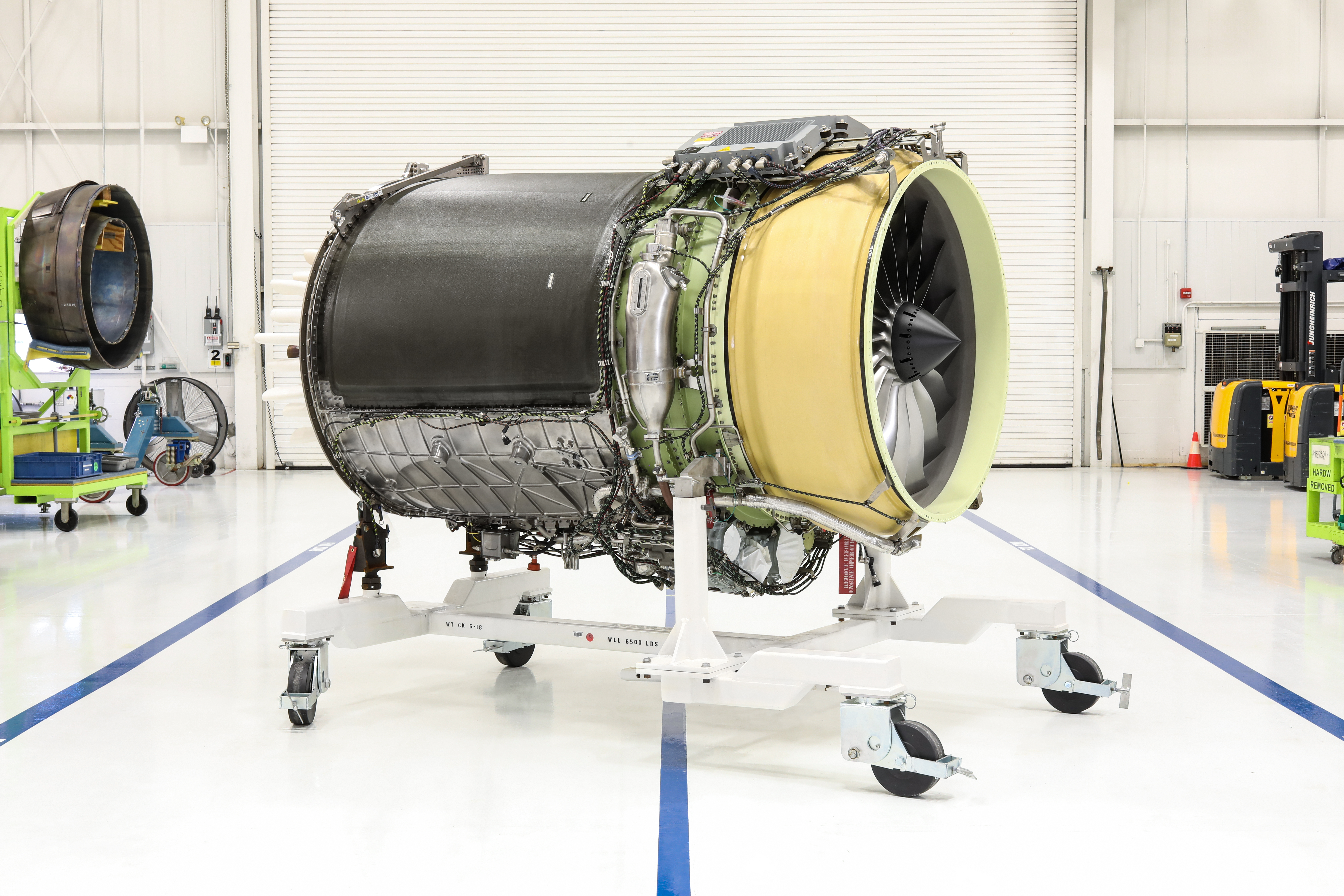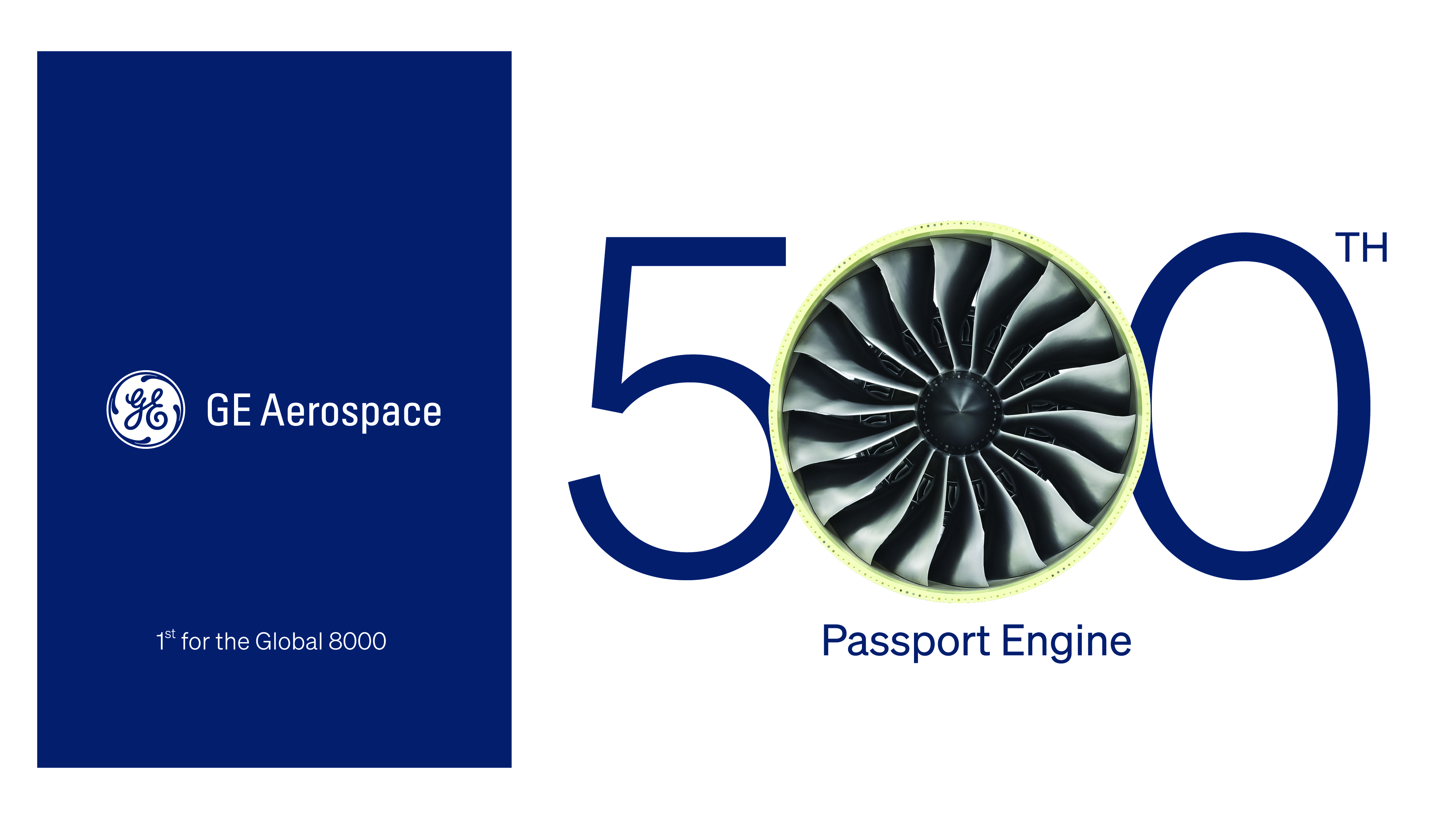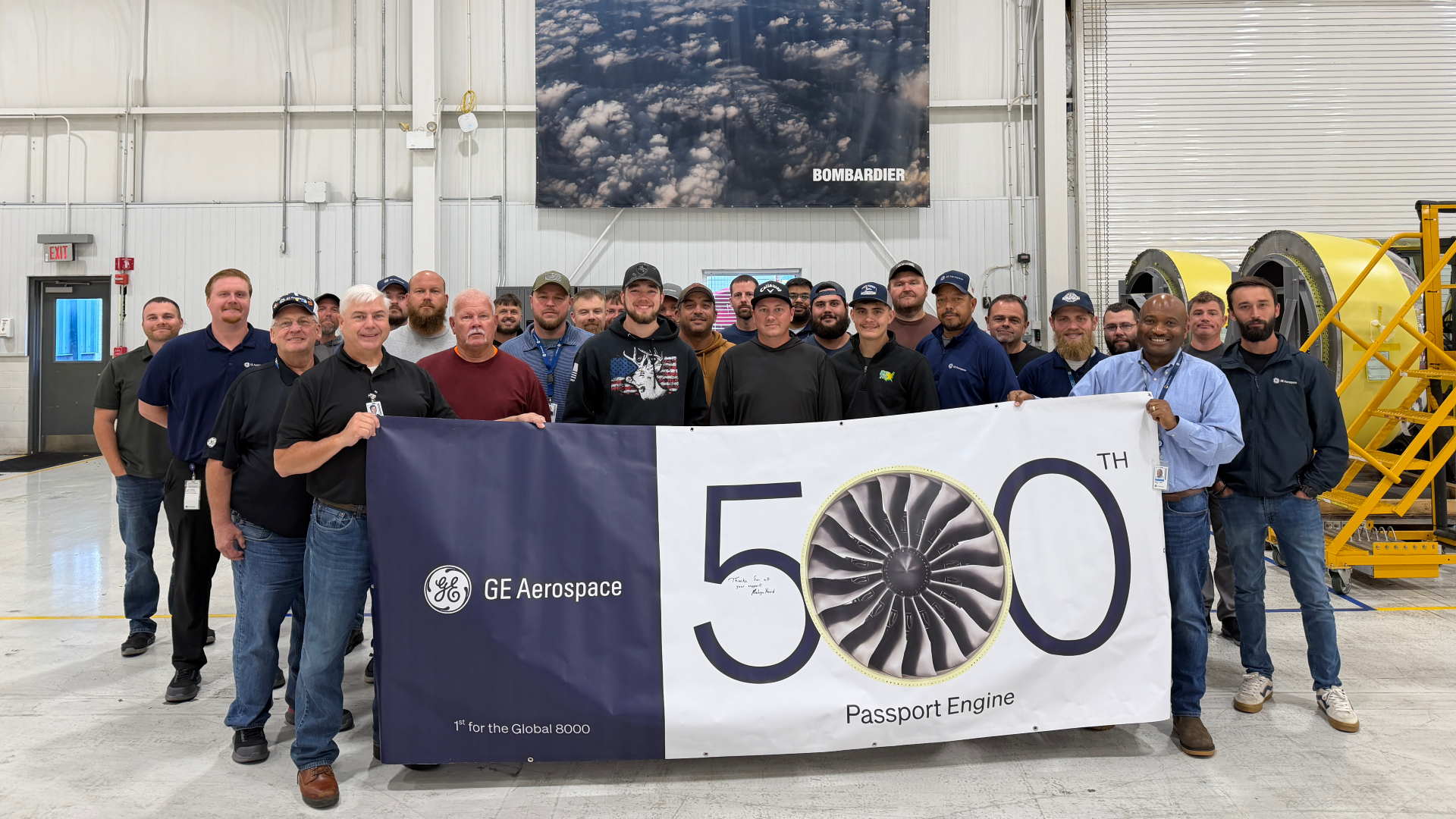Bound for Glory: GE Aerospace’s 500th Passport Engine Is Certified for Bombardier’s Global 8000 Business Jet
October 16, 2025 | by Chris Norris
“When we launched the Passport engine into service back in 2018, we knew there would be a future demand for more capabilities,” says Melvyn Heard, general manager of business aviation for GE Aerospace’s Commercial Engines and Services business. “Better fuel efficiency, better maintainability, increased flexibility across operating ranges. That’s why we designed those capabilities into the engine from the beginning.”
And then some. The Passport engine’s capabilities have already enabled it to rack up 600,000 flight hours since it first went into service in 2018, with a dispatch reliability rate of 99.9%. Not too shabby. Now it’s achieved another landmark.
When the 500th Passport engine ships this October, it will be the first one destined for the world’s fastest business jet, Bombardier’s Global 8000, since the Passport was certified for that jet by the Federal Aviation Administration and Air Transport Canada. The Global 8000 is so named for its ultra-long range of 8,000 miles.
This new milestone is a reminder of the significant technological advances GE Aerospace builds into its engines, which enable airframers and operators alike to unlock additional capabilities. “Existing Global 7500 aircraft customers have access to a service bulletin that will allow them to upgrade their aircraft to take advantage of these new features,” notes Heard.
Optimizing Engine Performance
Some of the Global 8000’s new capabilities are the result of sophisticated upgrades in the Passport engine’s software. “We took three operating parameters — altitude, temperature, and pressure — as inputs to optimize engine performance,” Product Line Leader David Zhou explains. “This improves the engine’s overall efficiency and allows its user to boost its thrust. The engine, in combination with aircraft upgrades, enables two things: greater speed and longer range. So together, we’ve been able to offer customers the most capable business aviation aircraft on the market.”
The new software upgrades have also drawn on artificial intelligence and analytics culled from over six years of the engine’s operating history. “Because we can now stream terabytes of data coming off of the whole fleet, we can share those learnings with various operators to ensure that they get the most out of this asset and enable them to get that greater range,” says Heard.

After seven years in service, the Passport engine remains 2% to 3% more fuel-efficient than any other engine in its space, which Heard attributes to the wealth of data, history, and experience commanded by a company as large and diverse as GE Aerospace. He also credits GE Aerospace’s continuous commitment to investing in new service technologies with improving its product support services in the business aviation field. For example, the company has developed and deployed AI-enabled digital solutions and tools over the past decade that have advanced the ability of its fleet support team and maintenance, repair, and overhaul (MRO) networks to predictively monitor and service its engines, leading to 60% earlier lead times in identifying predictive maintenance recommendations. “We think this also plays a huge role in our team being recognized by our operators for the fourth year in a row in the AIN Product Support Survey as the best engine providers of business aviation customer support,” says Heard.
The size of the business jet market encourages the company to build close relationships with its customers and end users. “It’s different from working with a commercial airline, since most of these customers only have one or two airplanes — not a huge infrastructure with their own engineering department,” says Heard. “They’re relying on us to get them insights on what’s going on in the engine and provide them with proactive techniques to maintain it. This helps prevent overburdening the operator with maintenance tasks. We just show them the right task at the right time.”
500 Engines in Seven Years

Zhou, who came to the Passport engine line after years of work on larger commercial engines, was initially struck by the sheer volume that this new milestone represents. “Five hundred engines in seven years is a serious accomplishment,” he says. “I think a lot of people hadn’t realized quite how big the fleet already is.”
While Bombardier’s fleet of long-distance business jets is smaller than that of a commercial airline, it punches well above its weight. “The other engine powering Bombardier jets, the CF34-3, has been around for four decades,” says Zhou. “We’re hoping for the same longevity with the Passport engine, and this is a way to do it: unlocking its capability for the customer.”
Heard sees the business jet market’s recent surge in longer-distance flight as a kind of bellwether for aviation as a whole. “The great thing about this industry coming out of Covid is the pent-up demand to travel,” Heard says. “Everyone wants to get back to being connected and seeing people face to face, and products like the Passport engine and the Global 8000 are game changers for folks with high net worth, who need to be able to go anywhere in the globe. Whether it’s a two-hour flight or an 18-hour flight, they can now hop into the airplane and go to make that deal. They have this machine to help them be more productive.”
Expect to see jet owners set more records in the process. The Global 7500 currently holds the record for the longest business jet flight in history, from Sydney to Detroit. “The Passport engine has set over 150 speed records with that aircraft,” says Heard, “and we’re just going to see more records go down as it goes into service with the Global 8000.”
